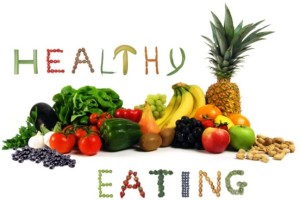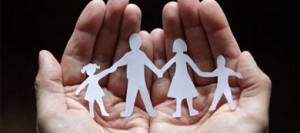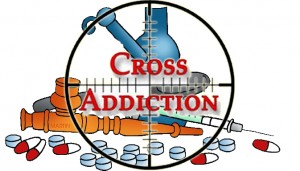Is someone really an addict if they have been prescribed medication for pain and can no longer function without the substance? They are certainly dependent on the painkiller but they are not necessarily an ‘addict’. They may well need clinical help coming off the substance due to the physical withdrawals they may experience. If they have maintained using the painkiller as prescribed and have not varied from the prescribed regime I would suggest they are not an addict in the sense of addiction diagnosed as a disease. The addiction as a disease model states that an addict will have lost the ability to control the use of the substance. That once they take the first one they will be compelled to consume more alongside being obsessed to use more. They will continue to use the drug despite negative consequences.
So it appears there are two issues running side by side here. Those that are using prescribed painkillers addictively and those that are using painkillers as prescribed but are struggling to stop because of the withdrawal process. In both instances the need for psychological input will probably be needed. Opiated pain killers affect dopamine levels. Dopamine is the chemical that gets released in our brain when we perform high reward activities like eating, having sex and listening to music.
When you take an opiated pain killer such as codeine the chemicals travel through the bloodstream all the way to your brain where they link up and attach themselves to specialised proteins known as mu opioid receptors. Once this chemical connection occurs, it sends a signal to the ventral tegmental area in the midbrain, which is involved in cognition, motivation and most importantly reward, and from there, the brain dumps a neurotransmitter, dopamine, into the nucleus accumbens. In short this biochemical process, and in particular the release of dopamine creates a feeling of pleasure, even euphoria. This feeling is so pleasurable that it is not unusual for those who are suffering with a pain condition to want to experience this feeling again and again. When it becomes time to reduce and stop the use of opiated painkillers the brain struggles to produce dopamine thus creating low mood, depression, anxiety and insomnia.
If opiates are used for longer than 2-4 weeks, then a lack in natural “feel good” brain chemicals known as neurotransmitters occurs.
Your brain has four primary neurotransmitters and each plays a critical and different role in your health and how you feel.
The four primary neurotransmitters are dopamine, serotonin, GABA, acetylcholine.
So what do they do for you?
• Serotonin regulates sleep and appetite.
• Dopamine is the feel good chemical, plays an important role in mood, energy, attitude, motivation.
• GABA acts as your calming neurotransmitter, helping you relax.
• Acetylcholine for processing information and memory.
• Endorphins are feel good chemicals our bodies release under extreme pain. They are considered the bodies own opiates.
When heroin and other opioid prescription pain relievers are abused for longer than a couple weeks, your brain slowly stops producing these critical neurotransmitters.
When your neurotransmitters are low or imbalanced, like they are almost always after addiction, you will likely feel flat, lifeless, depressed, nervous, anxious, stressed and unable to enjoy the things that use to bring you pleasure and joy in life.
This is the point where seeking help from a counsellor may be important. It can feel like these feelings are never going to pass. Seeing a therapist can help you to develop tools to deal with these post acute withdrawal symptoms in order to reduce the risk of relapse.
If you are struggling with coming off opiated medication and want help from a specialist addiction therapist please call Victoria Abadi Therapies on 07983726647 or email vivtoriaabadi66@gmail.com
Face to face sessions can be arranged in the Hale and Wilmslow area. Alternatively Skype sessions can be offered to those living in areas outside of Cheshire and Manchester.
 Over the years I have devised a three tiered way of working with clients. Think of an iceberg divided into 3 parts. The top part of the iceberg is the bit that clients usually present in therapy with. They come to me stating that they are obsessively and compulsively using a substance or addictive behaviour, such as gambling or watching pornography. If they are using a substance such as alcohol or cocaine daily then the first thing we need to work on is stopping that behaviour so that they can become psychologically available for counselling. At this point the work that I may be doing with the client may look and feel more like advice and guidance rather than therapy. This is the bit that is visible. We will look at what support the client can access, what are the barriers to them accessing that support. Helping the client understand that life has to be better clean and sober than it is using or drinking. This looks and feels different to every individual but in my experience has to be about connection to their life and others in some meaningful form or other. It may be a connection to other recovering people, a connection with a hobby such as yoga, running or painting. Again this is more effective in making the client have a sense of wellbeing if they are connected to others practicing/participating in the same thing. I remember one of my clients describing to me the importance of having found her tribe. She had tried the 12 step model of attending mutual aid meetings but had not felt comfortable with this. She went on to use therapy weekly combined with yoga for the next 12 months. Within her yoga practice she met a lot of other likeminded people. She felt connected. She had found a place where she felt she belonged. Addiction more often than not takes a person to a place of isolation. I now understand isolation to be something born from a sense of shame and self-loathing. It doesn’t start out that way. It starts out as using substances on your own primarily so as to not be seen to using too much, not having to explain yourself, an underlying sense that the way your using is not quite right, maybe a sense of paranoia if other people are around, it may even be you just don’t want to have to share your stash. Whatever the reasons may start out as somewhere along the line something changes. That desire to be alone turns into a need to be alone. Facing other people becomes too difficult whether it be due to shame, embarrassment, social anxiety, depression, paranoia, psychosis and the result is the same – addicts spend more and more time alone due to need not want.
Over the years I have devised a three tiered way of working with clients. Think of an iceberg divided into 3 parts. The top part of the iceberg is the bit that clients usually present in therapy with. They come to me stating that they are obsessively and compulsively using a substance or addictive behaviour, such as gambling or watching pornography. If they are using a substance such as alcohol or cocaine daily then the first thing we need to work on is stopping that behaviour so that they can become psychologically available for counselling. At this point the work that I may be doing with the client may look and feel more like advice and guidance rather than therapy. This is the bit that is visible. We will look at what support the client can access, what are the barriers to them accessing that support. Helping the client understand that life has to be better clean and sober than it is using or drinking. This looks and feels different to every individual but in my experience has to be about connection to their life and others in some meaningful form or other. It may be a connection to other recovering people, a connection with a hobby such as yoga, running or painting. Again this is more effective in making the client have a sense of wellbeing if they are connected to others practicing/participating in the same thing. I remember one of my clients describing to me the importance of having found her tribe. She had tried the 12 step model of attending mutual aid meetings but had not felt comfortable with this. She went on to use therapy weekly combined with yoga for the next 12 months. Within her yoga practice she met a lot of other likeminded people. She felt connected. She had found a place where she felt she belonged. Addiction more often than not takes a person to a place of isolation. I now understand isolation to be something born from a sense of shame and self-loathing. It doesn’t start out that way. It starts out as using substances on your own primarily so as to not be seen to using too much, not having to explain yourself, an underlying sense that the way your using is not quite right, maybe a sense of paranoia if other people are around, it may even be you just don’t want to have to share your stash. Whatever the reasons may start out as somewhere along the line something changes. That desire to be alone turns into a need to be alone. Facing other people becomes too difficult whether it be due to shame, embarrassment, social anxiety, depression, paranoia, psychosis and the result is the same – addicts spend more and more time alone due to need not want.





